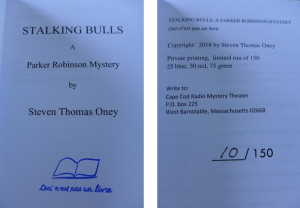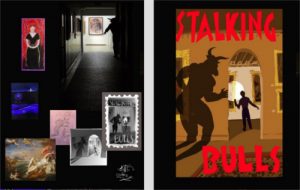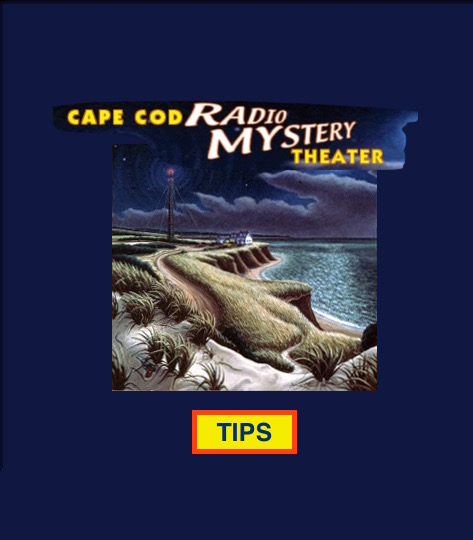Ceci, N’est Pas Un Livre
Continued from sidebar….
Annie and I had decided to privately print up a small batch of Stalking Bulls, mainly to shop to book publishers. Since the topic of this book dealt with the art world, I thought it might be fun to treat them not as ‘books’ but as ‘objects d’art’.
Playing off Magritte’s idea, we commissioned a stamp showing an open book along with the caption, ‘Ceci, n’est pas un livre. (‘This is not a book’) We printed up 150, gave each an individual number (___/150) and then stamped them according to the scheme: the first 25 in blue, the next 50 in red and the remaining 75 in green.
These books (or rather non-books) carried no ISBN numbers. They were not galley proofs, either. And even though each one contained the content of a book and could function and be read just like a real book, they were not to be thought of as ‘books’ at all but ‘objects d’art’. Exactly the same way fine arts painters will commission 150 prints of their painting. Each print is identical, each copy is deemed unique, and the idea is that the lower-numbered prints are considered the most desirable to own.
Our caption reading, ‘Ceci, n’est pas un livre’ was to further reinforce the idea that these copies of Stalking Bulls should be thought of in an entirely new and different light.
We have not yet begun auctioning CCRMT memorabilia, so I can’t report on how well that idea is working out, but having the stamps in hand, I began wondering if other self-publishing authors might be interested in using our stamps and following the same approach we have.
Details are still to be worked out, but the gist would be: Authors only would be invited to commission a print run of either 60 or 150 units of their unpublished manuscript. The books (er, rather non-books) would then be numbered and stamped on the title page according to the scheme: 10blue/20red/30green=60 or 25blue/50red/75green=150. The books are then the sole property of the author to do with as she pleases: sell them, auction them, shop them to publishers, give them away to mentors and proofreaders and others as thanks for their help and encouragement or simply salt them away against the day when they may have jumped in value.
Numerous writers well-known to the public today began their careers self-publishing their works. (Many may recall that an early self-published book of poems by Edgar Allan Poe was discovered in a New Hampshire book-barn and fetched $15,000 at auction). First editions of books often increase in value over time. Trouble with First Editions is, when they do become worth something, they very often are no longer in the hands of the author, who might have benefited from being able to sell them on E-bay.
A stamped and numbered book out of a finite run encourages people to think about it in different terms, particularly its potential to increase in value. Imagine a scenario in which a complete stranger, taking a flyer on a self-published book, reads it, enjoys it, and thinks to himself: ‘here is a writer going places’. And just like the investor in race horses, the reader may consider it a worthwhile move to acquire a stamped/numbered/and signed copy against the day when that writer becomes acclaimed and when these early printed efforts are looked upon as desirable from a collector’s standpoint.
To further reinforce the notion that ‘Ceci n’est pas un livre’ books are not books but objects d’art, authors would be encouraged to come up with their own personalized artwork for the covers, whether that be a painting, an illustration, a sketch, a photo or something else. Something that might look intriguing hung on a wall, like a painting, rather than just lining a bookshelf. Cover text might be restricted to the title alone.
Question: Would books carrying the ‘Ceci, n’est pas un livre’ imprint necessarily indicate a book of higher quality?
Would a ‘Ceci, n’est pas un livre’ book stand a better than normal chance of being an undiscovered ‘diamond-in-the-rough’ or even an undiscovered ‘diamond’ pure and simple? Would it be more likely to be the next ‘To Kill a Mockingbird’? Unfortunately, no. That will still be up to the reader to decide. Although ‘Ceci, n’est pas un livre’ would reserve the right not to accept a submission, the quality of the work will not be the criterion of books we accept.
However, at the very least, the ‘Ceci, n’est pas un livre’ imprint would tend to indicate that here is an author who believes in herself, believes in her work, takes herself seriously and has put the time and dedication into turning out the very best work of art possible, regardless of its overt commercial potential.
Certainly, this is the kind of author ‘Ceci, n’est pas un livre’ would hope to attract: not just mystery writers but the ‘Harper Lee’s’ of the world, the earnest and dedicated ones. (If Harper Lee had not had the good fortune to have her friends in New York help her shape and groom her manuscript, it is quite possible she would eventually have gone the self-publishing route herself. If so, I imagine that To Kill a Mockingbird might have been a bit more awkward, a bit less polished, but it still would have carried her spark.)
The basic agreement: authors would commit to printing only the exact number of copies specified. Authors would receive a bound ledger/journal to keep track of who receives copies of each numbered original. Authors names would be entered into a ‘Ceci, n’est pas un livre’ roster on our website. In return for lending its stamps and its brand, ‘Ceci, n’est pas un livre’ would expect to receive two copies of the author’s book, one blue-stamped copy and one other copy of their own choosing –one for us to sell and one to keep for our archives.
To further explore this possibility, authors are invited to e-mail me at:
theauthor@capecodradiomystery.com
or write to:
Cape Cod Radio Mystery Theater
P.O. Box 225
West Barnstable, MA 02668




